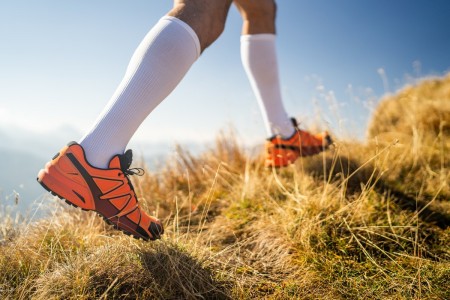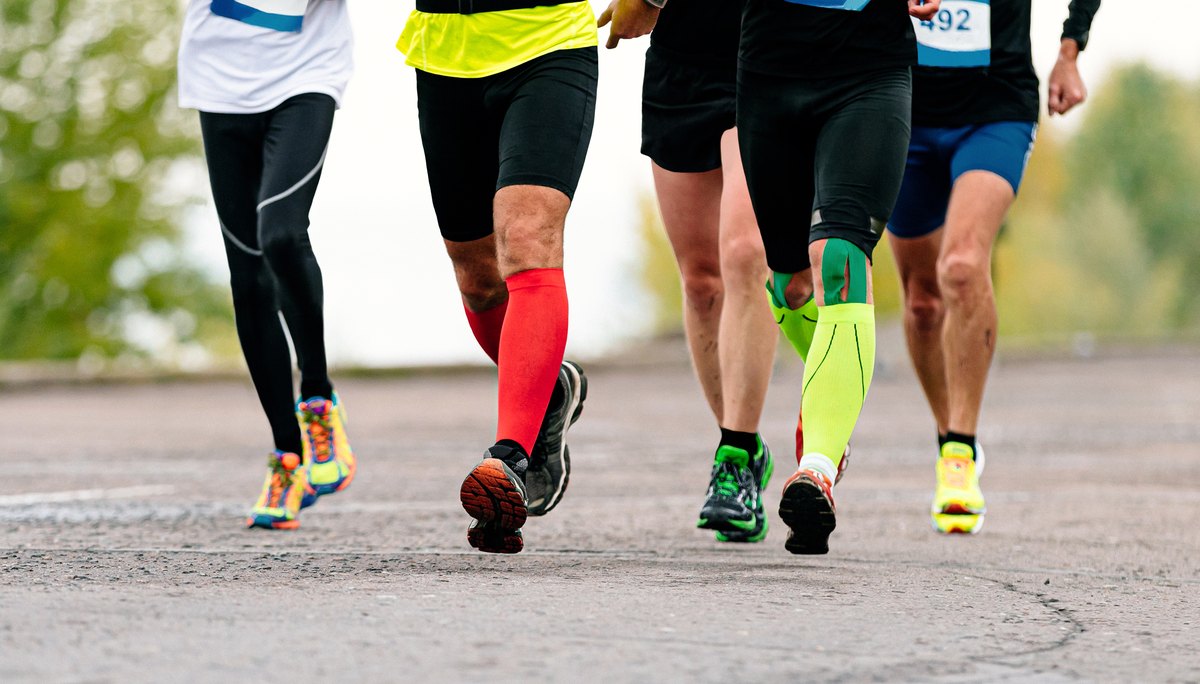
Advertisements
Most of us have been wearing socks for as long as we can remember to keep our feet comfortable in shoes. But some socks serve an even more important purpose: Compression socks help reduce swelling in the lower legs, feet and ankles, explains Jacqueline Sutera, DPM, podiatrist and Vionic Innovation Lab Member.
Video of the Day
Compression socks are especially beneficial for older adults and those with medical issues such as diabetes and poor circulation (venous insufficiency), Dr. Sutera notes. "They can help prevent and treat varicose veins, spider veins, leg ulcers and wounds by encouraging the blood to circulate back up to the heart and not to 'pool' in legs and feet," she says. This can help reduce fatigue in the legs, too.
The key, notes Najwa Javed, DPM, podiatrist with Silicon Valley Podiatry Group and founder of E'MAR Italy, is to find a pair that fit well, which is where plus-size compression socks come in for people with larger calves.
The Best Wide-Calf Compression Socks
- Vim&Vigr Mountain Sun Compression Socks ($36, VimVigr.com)
- Comrad Wide Calf Compression Socks ($28 and up, ComradSocks.com)
- LEVSOX Wide Calf Compression Socks ($26.99 for a 3-pack, Amazon.com)
How We Chose
We chatted with podiatrists to get their professional perspective on the best wide-calf socks and how to find your perfect product. We chose our top picks based on their personal recommendation and criteria including:
- Style
- Comfort
- Durability
- Fit
1. Vim&Vigr Compression Socks
Visit Page https://vimvigr.com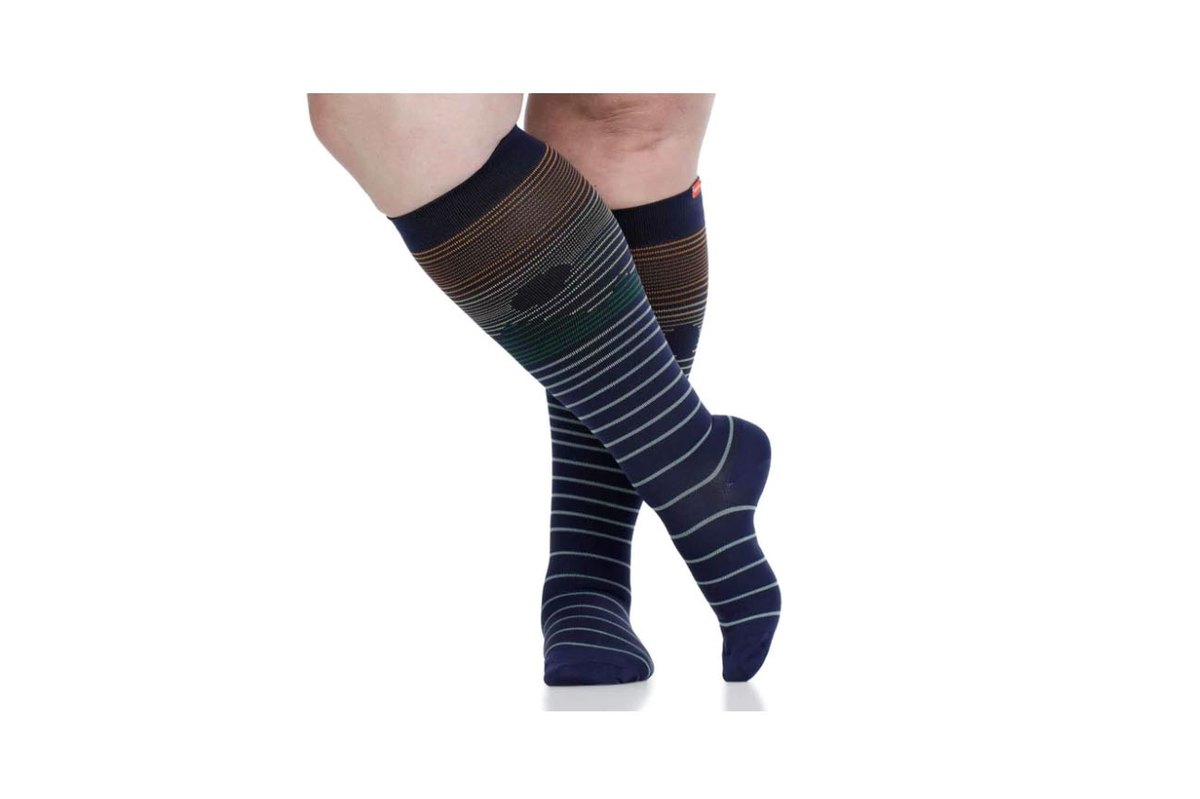
This brand of socks specializes in compression technology that's not only comfortable, but also stylish. They're made with a high-quality fabric blend featuring cotton and Merino wool and are 200-needle count. This knit is extremely soft on the skin, while the compression technology provides just the right amount of pressure (15-20 mmHg) for all-day wear.
Some styles are also available at the 20-30 mmHg compression level, which is a medical-grade level used for conditions like moderate edema, deep vein thrombosis and moderate spider and varicose veins.
These socks also come in a wide range of sizes, covering women's sizes 5 to 19 and men's sizes 3.5 to 16.5. The wide-calf style fits calves from 17 to 21 inches around.
Buy it: VimVigr.com; Price: $27-$44
Advertisements
2. Comrad Wide Calf Compression Socks
Visit Page https://go.skimresources.com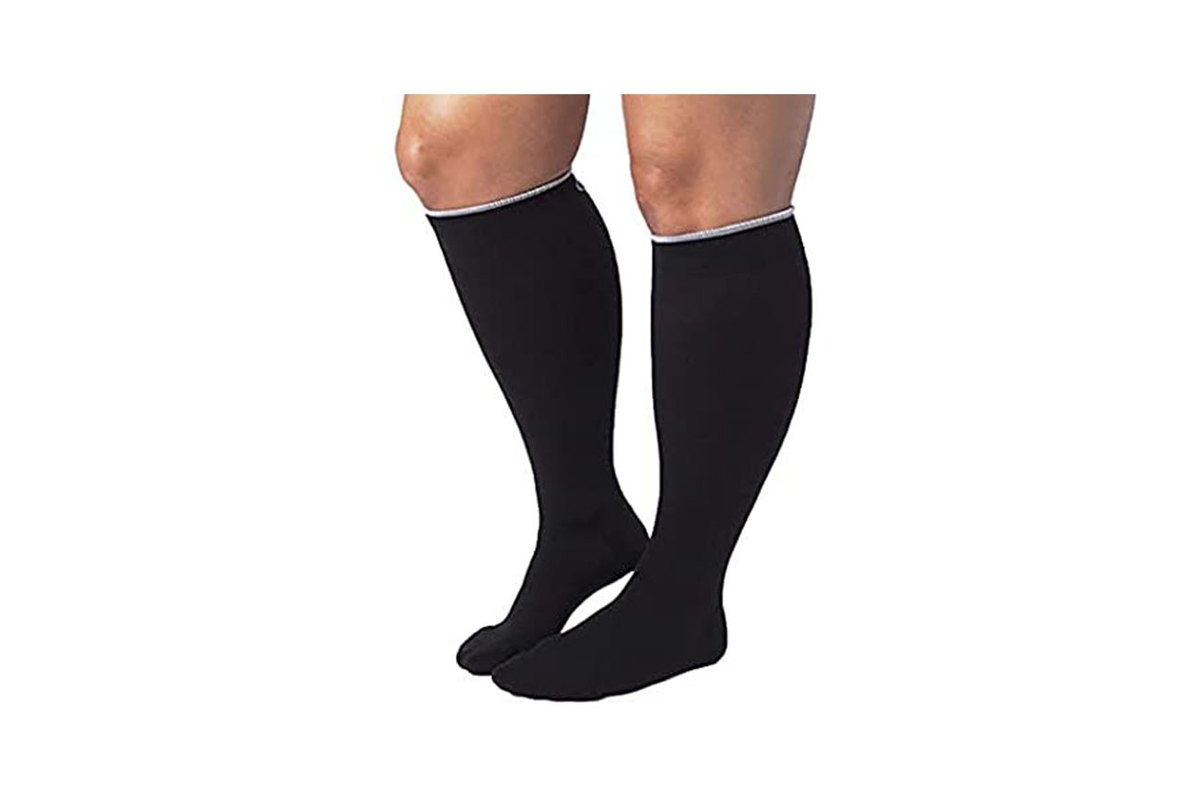
These socks were designed to increase circulation and provide more comfort and pain relief for the entire lower leg. With 15-20 mmHg compression, they are lab-tested to ensure optimal pressure and comfort.
They come in a wide range of sizes, including women's sizes 4 to 10 and men's sizes 4 to 12, all made for people with plus-size calves.
Buy it: ComradSocks.com; Price: $28 and up
3. LEVSOX Wide Calf Compression Socks
Visit Page https://www.amazon.com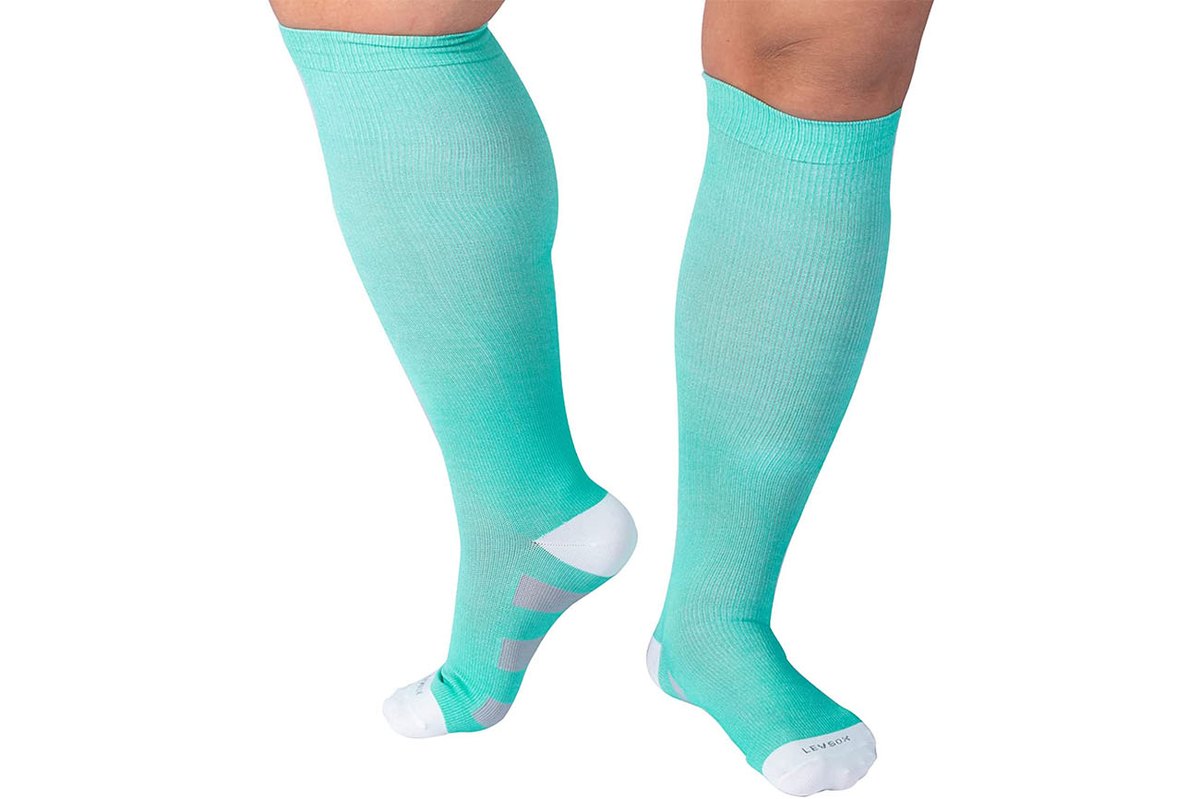
Advertisements
With more than 2,500 five-star reviews on Amazon, these plus-size compression socks offer a comfortable fit and 15-20 mmHg compression support, which is perfect for all-day wear.
These socks can fit women's shoe sizes 5 to 12.5 and men's shoe sizes 5.5 to 12, and they can accommodate calf sizes between 19 and 24 inches around.
Buy it: Amazon.com; Price: $26.99 for a 3-pack
What to Know Before You Buy
Here are some features to look for when shopping for wide-calf compression socks.
1. Fit
Sock fit depends mostly on the circumference of the calf and ankle, according to podiatrist Nelya Lobkova, DPM. She recommends purchasing wide-calf socks that accommodate the width of your calf comfortably without adding too much pressure and suggests trying on a pair of socks toward the end of the day when the legs and calves are typically larger.
2. Compression Level
Naturally, the more comfortable a pair of socks is, the more likely you are to wear them. For this reason, Dr. Sutera recommends emphasizing comfort by choosing a pair of socks with just the right amount of compression for you.
"Your compression socks shouldn't feel tight, cause discomfort, numbness, tingling or dig into skin," she says. "If this happens, size up — the feeling should be one of having your legs supported, like a 'hug,' not constricted or tight."
3. Lifespan
Compression socks will start to feel loose as they become old and worn out, so Dr. Sutera recommends replacing them when you see signs of wear, loss of snug feeling, holes and any elastic or fiber fraying.


